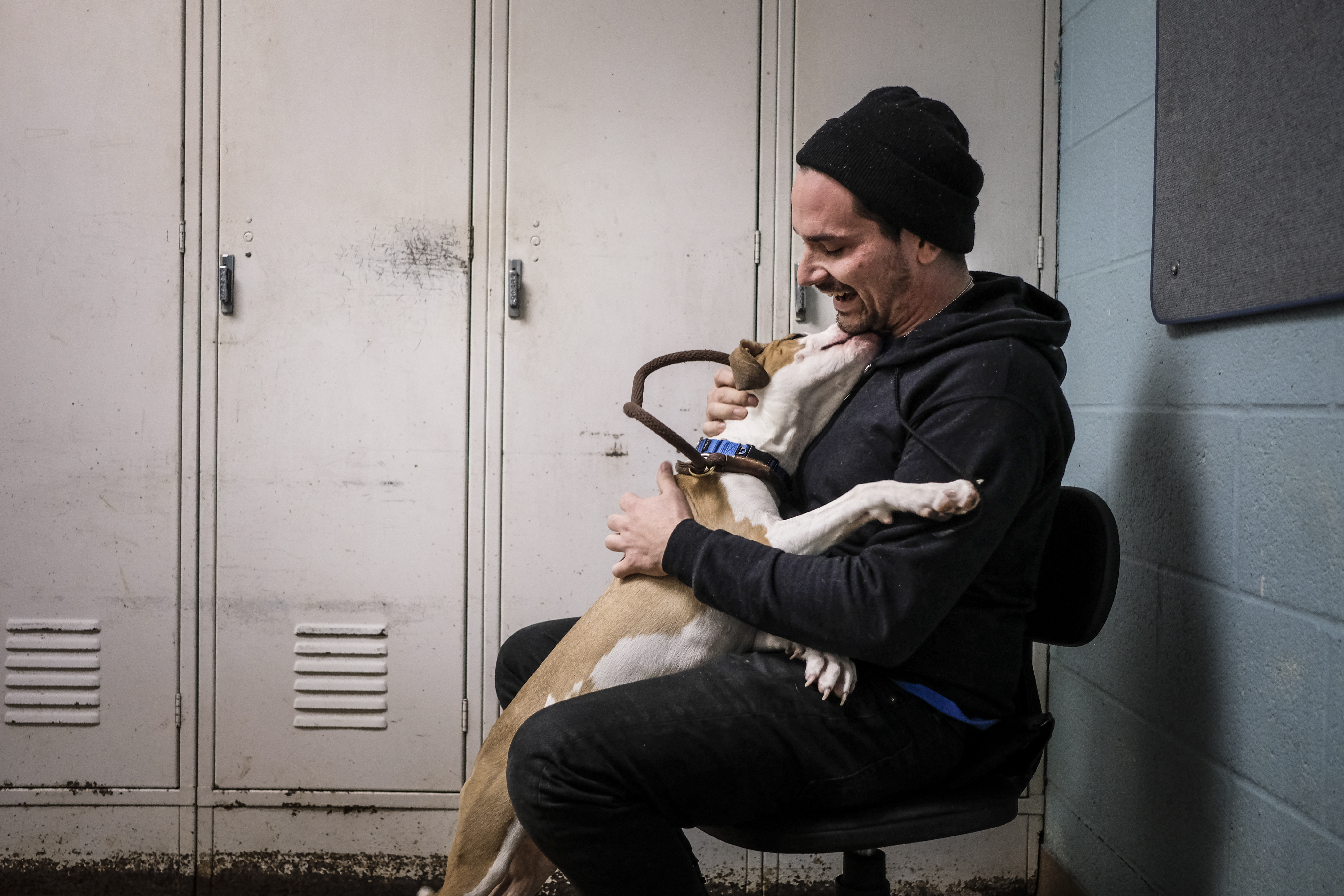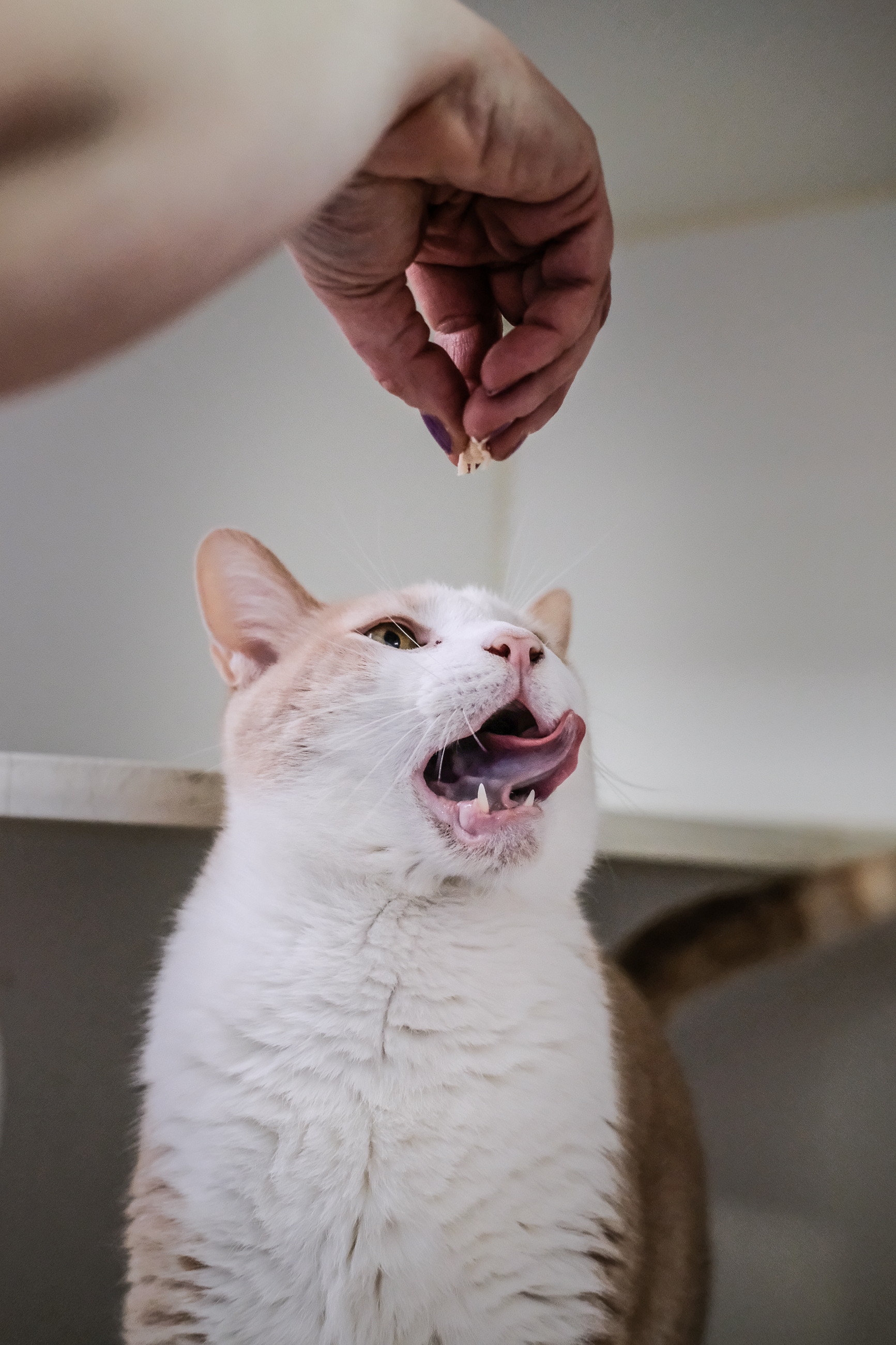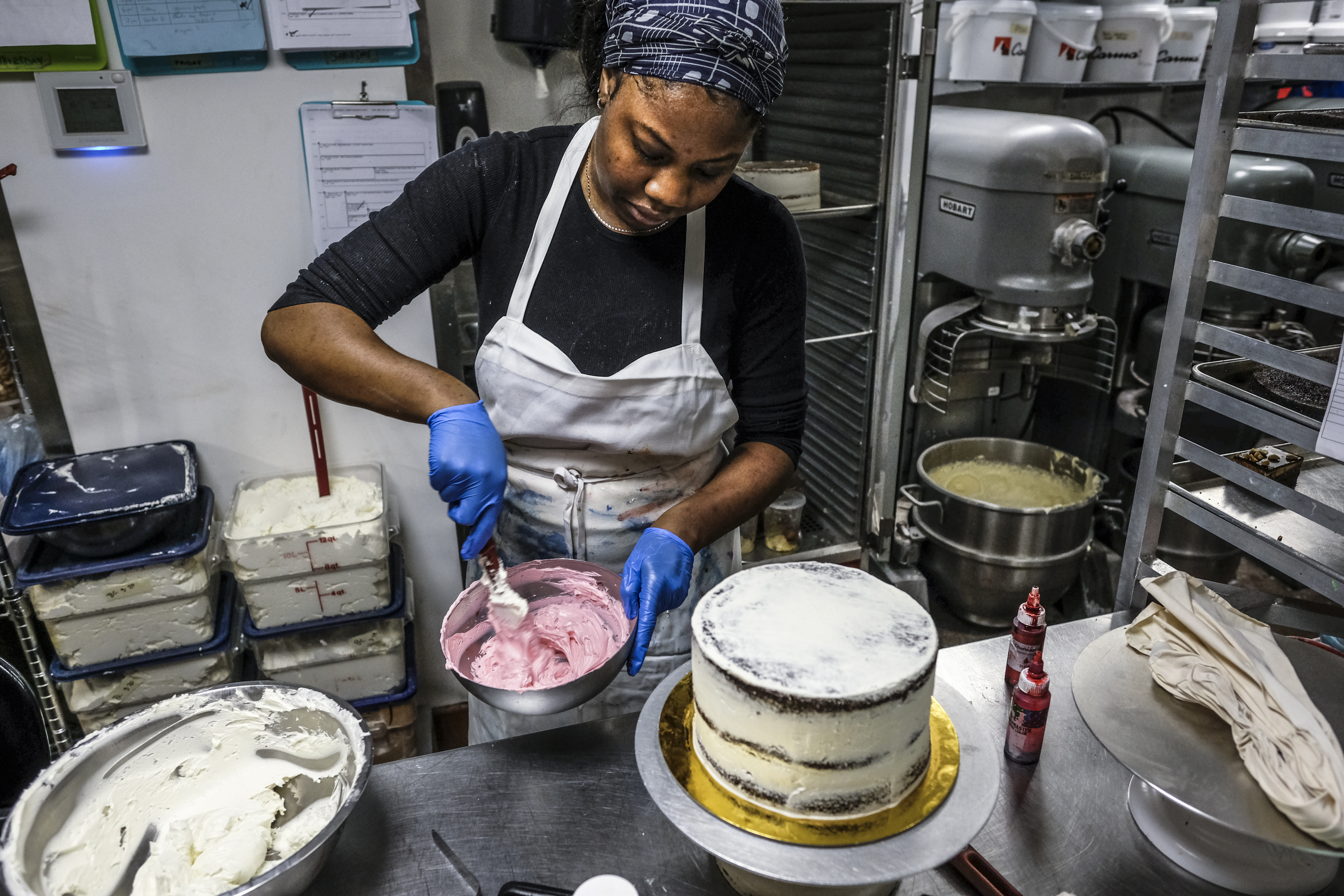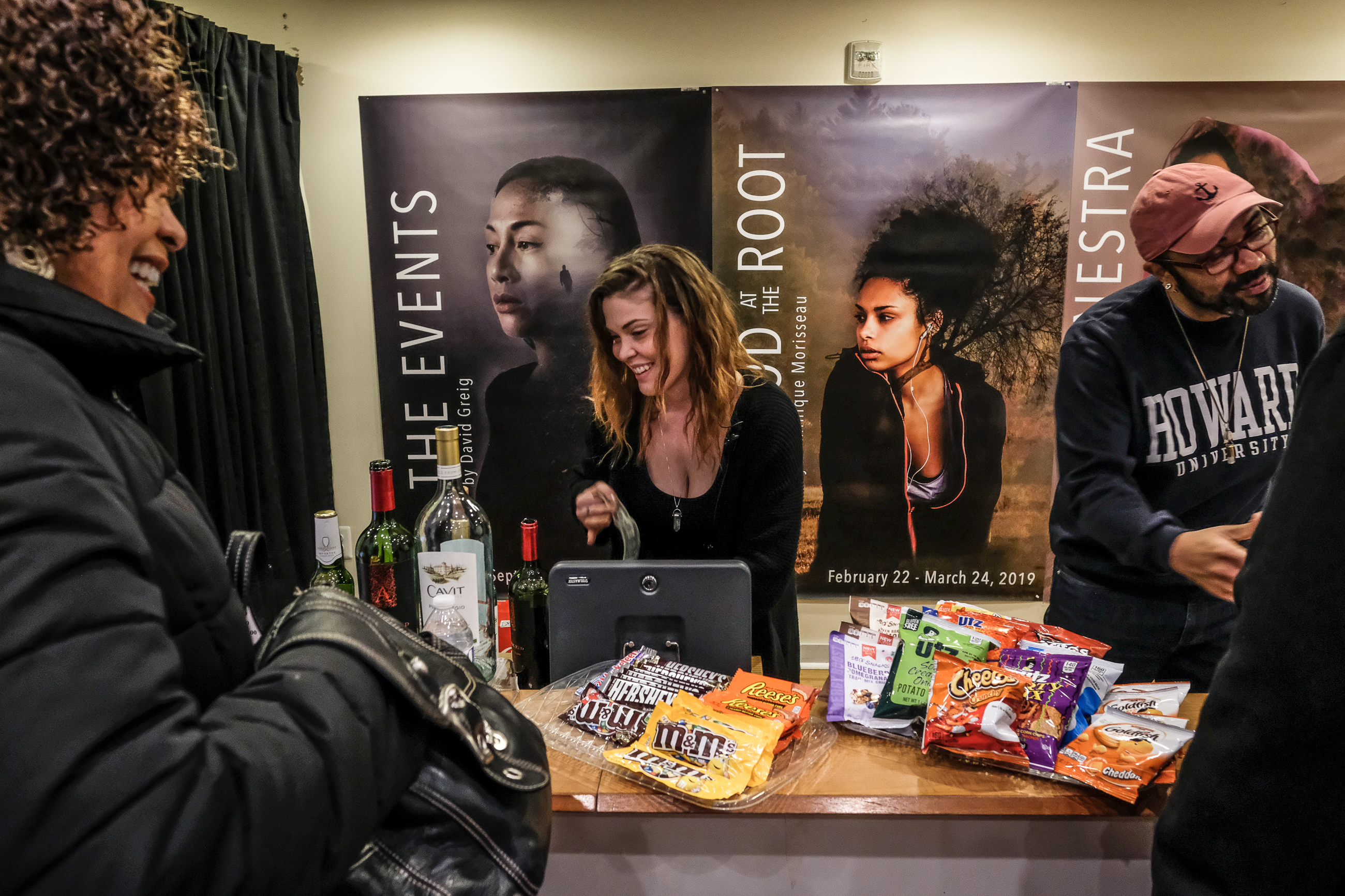One Day
The news can’t tell you everything about life in Washington, D.C.
Take March 22nd, for example. National stories portrayed D.C. as a political circus that Friday. President Trump, who left for Mar-a-Lago in the morning, said he will nominate an ally to the Federal Reserve and reversed sanctions against North Korea that did not yet exist. And then in the evening, just as the East Coast was heading home from work, the Mueller Report came out—an anti-climax nearly two years in the making.
“Where’s the Mueller Report? Washington Can Barely Handle the Anticipation,” read a New York Times headline that afternoon.
City Paper writers were reporting all over D.C. at the time, and Washingtonians seemed to be handling the anticipation just fine. D.C. is home to some 700,000 people whose lives don’t often make the newspapers.
Starting before 5 a.m., City Paper set out to document that side of D.C.—the one that doesn’t show up on network news shows. Our last reporter went to bed well after midnight. We didn’t witness any collusion, but the mundane moments we did see mean as much as the big ones we didn’t.
On Friday, March 22nd, locals danced and played the lottery and wondered when their children would be born. They drank and made art and fought for their homes and laughed. And now that’s in the news, too. —Will Warren
Pacers Running
14th Street NW

The city is asleep, and yellow street lights reflect off the shallow puddles and illuminate stray pieces of trash on the otherwise deserted sidewalks. Cars sit idly along the darkened lanes. One at a time, the runners appear, walking through the cold drizzle into the unoccupied Pacers Running.
The empty store provides temporary relief from the 20 mph wind for the 10 runners huddled inside. Some put on layers, while others strip down to shorts. One runner, Petros Abraha, adjusts his 8-pound weight vest around his red Marine Corps Marathon long-sleeve shirt. They wait for instruction.

“Okay, let’s run Georgetown,” Kayla Nicolay tells the group. “Go down Q Street, and then we’ll get to the Exorcist stairs.”
At 5:06 a.m., the runners head out of the store. The dedicated group, led this morning by Nicolay, meets three times a week at 5 a.m.—hours before sunrise. For about five miles on Mondays, Wednesdays, and Fridays, the streets of Northwest D.C. belong to them. Some of them also do an 8 a.m. social run on Saturday mornings.
“It’s like my church,” says Keri Kohler, who has run with Pacers since 2010. That’s how she explains the camaraderie of these runs to her mother.
Once they arrive back at the store, some 50 minutes later, the runners break off. About half stop by the local Peet’s Coffee. Some head home to get ready for work. Katie Hatt, a regular since 2015, runs down to the National Mall for an extra seven miles. —Kelyn Soong
N Street Village
N Street NW
Clients file into the main room at the Day Center, taking seats at tables and waiting until 8 a.m. when they can eat their choice of biscuits, jelly, oatmeal, cereal, and fruit. Each numbered table has a centerpiece with donated white roses. The radio is tuned to Majic 102.3—“the real sound of the DMV.”
Everyone enters the Village through a green, peaceful courtyard. The welcoming haven for women experiencing homelessness opens at 7 a.m. and offers daily meals, showers, laundry, clothing, and wellness activities each day of the year.
Nicole Comrie Brazelton, an attorney who works in crisis management, began volunteering at the Village in 2013. She used to live nearby and would see the women she’d served at stores or on the Metro. “They were my neighbors,” she says. “The most important part of this life is human connection.” Today, she’s serving breakfast.
Belva, who currently lives in a shelter, has been visiting the Village for four months. She decided to try it because she wanted to step out and see what else was out there. “It’s a clean environment. The people are nice and friendly,” she says, glowing with calm. “Two thumbs up.” Belva believes in working hard but then relaxing. “I don’t have a job right now, but it’s on the way. When it comes, I know I’ll be able to do some wonderful things.”
—Diana Michele Yap
George Washington University Medical Faculty Associates
Pennsylvania Avenue NW
It takes 49 seconds to get from the bottom of the Foggy Bottom Metro escalator to the top, and if you catch the light wrong, you have to wait up to 45 more seconds to cross 23rd Street NW. The walk from there to the doctor’s office should take another 2 minutes, but we walk slower. We walk slower together now because she’s late in the pregnancy.
There is an elevator waiting in the lobby, but the other elevator passengers want off at floors lower than ours, so we keep stopping. Doors open, doors close. We arrive 3 minutes after our scheduled 8:45 appointment was supposed to begin. Check-in takes 17 seconds (Name? Ok. Wait there.) and we sit on the ugly paisley-patterned waiting room chairs for another half minute before we are called back to the room where the appointment will be. That room has no clock, but a calendar is half-visible under a copy of Vanity Fair magazine. “Step back outside so I can take your weight,” the nurse says to my wife. After the nurse finishes asking some other cursory questions, she leaves.
We wait 6 minutes and 17 seconds for the doctor. When he arrives, he makes small talk for a bit, then asks about cervical mucus. He tells us that we’ll know it’s real labor when the contractions are 5 minutes apart and regular. You can time them, he tells me. He says the baby can come 2 weeks before the due date or 2 weeks after, but according to him at least, no one stays pregnant forever. The whole thing takes 12 minutes.
This is the last scheduled doctor’s appointment before our first child is due. Our friends with kids laugh at us when we talk about due dates and schedules as if they mean anything. You just have to wait. Savor it, they say.
My wife and I are not in the habit of not knowing when things will happen. We live scheduled, orderly lives. We receive updates on our phones telling us where to be when and reminders to schedule reminders to update our schedules. But with the pregnancy, since we have no exact when, we harp on how long. How many weeks. How many minutes between contractions. How much time until the next appointment. We count everything with exacting precision as we wait for our lives to change immeasurably.
—Brian McEntee
District of Columbia Courts, Landlord and Tenant Branch
4th Street NW
93 cases at Landlord and Tenant Court today: 93 people fighting to keep their homes. Every eviction in the city gets a hearing here, and last year, there were 31,000 filed. As people trickle into the courtroom, Judge Sherry Trafford—who has a kind but austere face, with sky-high cheekbones and long, silvery hair—explains the basic rules of eviction proceedings.
They’re complicated, so while Trafford practices her speech almost daily, it takes her about half an hour to get it out. She defines a lot of the legal jargon the cases will hinge on, and then warns about the ways that tenants can be taken advantage of: The lawyers here don’t work for the District, she emphasizes, only for the people who hire them, and it’s important that when you’re talking to a lawyer, you know who they work for. Likewise, she says, “you are not required to enter any agreement,” and you should not sign anything you don’t understand.
By the time she’s finished, the courtroom seats are full.
Now it’s time for roll call. The court clerk reads through the cases one by one, and people announce their presence. Almost all of the tenants are there without an attorney, and they stand up to say their name when called.
For the handful of lawyers in the room—most of whom represent several large landlords—the Court is like a second office. When a big property owner is aggressive in filing for eviction, the cases come in batches whenever rent is due. Today, the clerk calls about twenty cases for Eagle Point Management back-to-back-to-back. Their lawyer, Gary Wright, keeps his head in his papers as he announces his name for each. Sometimes, when the tenant hasn’t shown up, he asks for a “default judgement,” which means that the landlord is now authorized to turn the resident out. In 30 seconds, six Eagle Point apartments have been cleared for eviction.
Upstairs, the hallway is packed with people waiting their turn at the Landlord and Tenant Resource Center, where Judge Trafford has pointed everyone to get help navigating the process. Law students and attorneys scurry around, plucking people out of line to give them advice and—so far as the Center’s limited resources allow it—connect people who have complicated cases to legal representation.
Deedee has been waiting at the Center for two hours and she seems relieved for a chance to talk: “You won’t believe the tricks they pull.” She’s here to support her fiancé, whose landlord claimed that he owed $11,000. That would mean he hadn’t paid rent for a year and a half, which Deedee says is simply a lie. “They figured poor people don’t keep records,” she says. Fortunately, her fiancé does keep his receipts, so it wasn’t hard to get the case cleared up.
93 cases is a relatively slow day for this court, and by 1:30, the final hearing is winding down. No one is left except the clerks, the judge, and a single designer-clad attorney. The tenant isn’t present, so after a brief discussion, the lawyer is able to easily seal an eviction. He straightens his tie, and turns around to face an empty room. —Joshua Kaplan
The Potter’s House
Columbia Road NW
For 15 years, Nicole Heidbreder has watched babies enter the world. She’s seen the power in mothers’ bodies and in their minds, through home births and hospital births and birth center births, cesarean sections and vaginal births, births in beds, in tubs, on the toilet, and in the shower. As a doula and labor and delivery nurse, she’s seen women believe they aren’t strong enough to deliver, they just can’t do it—and then they do.
No one in her four-day doula workshop is the same. Nearly 30 women—and one man—have come together to learn about labor and childbirth and the role of a doula. They’re of different nationalities, ethnicities, and racial and socioeconomic backgrounds, and they live in D.C., Maryland, and Virginia. Some have never given birth, some have, and one brought her young baby to the workshop. Every few minutes, the baby makes cooing and gurgling sounds as his mother gently rocks him in her arms.
A table near the front of the room holds a myriad of workshop materials—a cervical dilation chart display, birth books and films, baby dolls for demonstrations, an assortment of extra sticky notes so the attendees can write down questions and stick them on a front wall.
Heidbreder asserts one thing for the workshop: no apologies. No one is allowed to apologize for anything they ask or anything they say. After attending hundreds of births, she knows it’s most important for people to feel encouraged, and never to feel ashamed of being human. On a brisk morning, this is the warmest, most supportive room in the District. —Kayla Randall
Humane Rescue Alliance
New York Avenue NE

Leni and Alex Attas
Loving Leni is laying eyes on her. She’s a 7-month-old hound mix with a fawn and white coat and a wound on her back at Humane Rescue Alliance. She’s beautiful, and she melts hearts.
She’s a little scared, shaking as staff approach her kennel, body coiled tight on her bed. Lisa Stemcosky and Alex Attas are set to evaluate her behavior, as they do with many dogs throughout the day, testing whether she will make eye contact, if she does well with being touched, whether she shows interest in playing, and if she guards her food. Passing an evaluation without any alarming behavior means going up for adoption quickly.

The team wants for Leni what they want for every animal in their care, what we all want for ourselves—a home.
They want good homes for sweet Leni and Kodiak, for their big boy Tarzan and even bigger boy Ghost, for older dogs like Zira, for cats Oscar and Lola, for young dogs Klaus and Kyle, and tiny puppy Heaven, who, at just a few months old, hasn’t quite got the hang of how to properly eat treats.
Home is their salvation. On the list of things Humane Rescue Alliance animal behavior and training director Alexandra Dilley would like to see, from more large dog fosters to more volunteers interested in spending quality time with animals during weekdays, a good home for animals will always be first.
“Any home is better than a shelter,” Dilley says. “So many animals need homes.”
With what little time they may have with animals, staff try to help them overcome fears—of people, of other animals, of the outdoors.
Leni shines during her assessment, showing interest in toys and not guarding her food, not taking issue with being touched and giving some soft eye contact. She’ll be up for adoption later this very day.—Kayla Randall
Rayburn House Office Building
Independence Avenue SW
The problem with being a member of Congress, according to Del. Eleanor Holmes Norton, is that you spend too much time sitting down. Gesturing to her smart watch, she moves past the elevator, taking the stairs to the Rayburn Building’s garage.
She needs to get gas before driving to WETA’s studios in Arlington to appear on To The Contrary. On Pennsylvania Avenue SE, at one of the few places where an employee pumps your gas, she mentions that she would like to try out one of the electric scooters.
On the drive she says that D.C. feels very hopeful right now. The Democrats control the House of Representatives and a D.C. statehood bill may pass that body for the first time in history. That it will almost certainly fail in the Senate does not dampen her mood.
In WETA’s green room she diligently reads through preparation materials, making notes as she goes, while the other panelists make small talk about the president and the 2020 elections. Norton chimes in only occasionally and gets up to peruse the station’s collection of jewelry.
Under the studio lights the group discusses the days’ issues. The guests—two younger Republicans, the delegate, and journalist Megan Beyer—agree more often than they disagree. Later, in the hallway, Beyer asks her where she’s going next. “Back to the Capitol of the United States,” she replies.
—Will Warren
Tenley Market Liquor
Wisconsin Avenue NW

It’s mid-afternoon and the trash can at Tenley Market Liquor is overflowing with crumpled, lost dreams. The trash can has to be emptied several times a day, seven days a week.
Customers line up to buy lottery tickets and instant-winner scratch tickets with names like “$500 Frenzy,” “CASH Celebration,” and “Blazin’ Hot Crossword.” They bet on numbers games and watch video horse racing on one screen while Keno plays on another.
Some iteration of the Tenley Market has stood here for more than 30 years. Until 2013, it was a typical convenience store with a popular sandwich deli. Long-time owner Lucy Park converted it to a liquor store. As Park operates the raised cashier station with other employees, she explains that while the deli was popular, it didn’t make much money.
But the lottery business is different. Tenley Market is the second-biggest seller of Powerball tickets in the city. It’s one of only a handful of locations given “Agent plus” status, meaning it’s allowed to cash tickets up to $5,000 on-site.
“There is a certain aura that you feel here,” says regular Peter Boyce, watching the horses run. “I think I just won $35.” Boyce misses the deli sandwiches, but has made frequent stops here for years, along with a diverse crowd of workers, retirees, American University students, firefighters from next door and, of course, customers buying beer, booze, and wine.

Citywide, gambling nets the District more than $50 million a year. D.C.’s gamblers spend $160 million online and $49 million on scratch tickets. Lucrative sports gambling, just approved by the D.C. Council, is due to start in the fall. Tenley will look to get in on that, too.
The flashing lottery signs, alluring video games, billboard stapled with past winners, rolls of instant tickets, and that overflowing trash can create a club atmosphere. One sign that is missing? Your odds of winning Powerball or MegaMillions. They’re woeful. Just one in about 300 million. But smaller victories have gamblers coming back. As more than one gambler has remarked, somebody’s going to win. The trash can tells a different story.
—Tom Sherwood
Columbia Heights
14th Street NW

As the go-go band jams out on their drums and keyboards, people begin to two-step side by side. While dancing on 14th Street in Columbia Heights on Friday afternoon, one by one they wait for Gloria Gomez, 52, to serve them fresh Salvadoran delicacies. Steam released from the hot sweet corn and milk drink perfumes the air. She ladles the liquid into foam containers, seals them shut, and wraps a napkin around the cup so that people don’t burn themselves.
Customers stare at the fried homemade snacks on display, debating whether to choose chicken taquitos or tostadas. While carefully pondering the decision, Gomez offers her suggestions, saying each were made “fresco” this morning. She points at the bags of freshly sliced mangoes or papayas, showing her variety of choices. Her cart on wheels holds the zip top bags of treats that she stuffs with homemade curtido (spicy slaw), pouring hot sauce on top per customer request. “Si or no?” she asks as she lifts the thermos filled with Spanish chile (hot sauce). Although she doesn’t speak any English, Gomez finds a way to communicate with everyone in the neighborhood, some of whom have been her customers for years. —Abby Cruz
Buttercream Bakeshop
9th Street NW

Shenelle Clement
It is “midday” for the early risers who labor in the basement kitchen of Buttercream Bakeshop and lead decorator Alex Mudry-Till is applying flourishes of forest green to the top tier of a wedding cake. “It is like creating an original piece of art,” Mudry-Till says as she forms the frosting into airy layers, blending the buttercream into an oil canvas of emerald.

Around her, Shenelle Clement, a decorator, fires up a blowtorch and pipes icing in an elegant spiral as cake artist Jacqueline Litman presses out the petals of an edible flower, pulling the already paper-thin gum paste into a cherry blossom. Fridays in the kitchen are devoted to prep work and finishing up ornate confections like wedding cakes.

After squeezing in time to finalize a rainbow-inspired birthday cake, Mudry-Till moves on to the wedding cake’s base, smoothing the frosting in satisfying swipes and replicating her thoughtful strokes with the flat end of her painter’s spatula. When the cake is finally complete, she hoists it up and proceeds to navigate her way through the narrow space to the walk-in refrigerator where her creation will wait for the happy couple to whisk it away to the world above. —Amy Guay
Cheers @ the Big Chair
Martin Luther King Jr. Avenue SE
Alicia waits outside nervously, unsure if she is going to enter Cheers @ the Big Chair, which is already packed. She hasn’t been before, and this is her last chance. Cheers closes tonight.
Inside, it’s a rare scene: a happy hour where everyone is actually happy. People nurse drinks and say goodbye to the restaurant’s famous crab fries. A pair of women point to a bowl of free condoms by the register. “They want you to be safe.”
As the DJ sets up, Ashley, who used to come here for karaoke on Thursdays, says she won’t sing tonight, but if she did, it would be Whitney Houston. “You have to have a good voice for that,” I say. “Not here,” she says.
The neighborhood restaurant, which opened in 2015, closes tomorrow after failed attempts to renegotiate its lease. But everyone is all smiles.
The music starts and Ashley begins to dance. “Everybody get on your phones, tell someone…” the DJ intones. “Let them know we’re going to be here all night. Celebrating.” —Will Warren
Congress Heights SE
It’s 5:30 p.m. and I’m done with my day job at the National Gallery of Art, and it’s time to put the finishing touches on tonight’s comedy show. I still need to figure out what-in-the-funny I am going to talk about tonight. “Why do I do this to myself?” I have that same thought every Friday.
Every week my partners and I produce “Attack of the Comics,” a stand-up show at the Drafthouse Comedy Theater. Tonight I don’t have any gigs before our weekly show so I’m home with my family. At 8:30 p.m. I’m still asking myself, “What’s funny??!” Maybe I’ll talk about our road trip to Atlanta last weekend. My wife and I took our three children, all under the age of 8, on a nine hour drive. That’s not very funny; it’s a horror film.
The show starts at 11 p.m. and tonight comedian Nick Thune is our lead-in. It’s cool when we have a popular act on before us. It’s a good thing when people leave the earlier shows, see folks waiting in line for our “local” show, and decide to stay and see “what-the-funny” is all about. But this night I still need to figure out what I’m going to talk about. I haven’t hosted in a month so I’m thinking “topical” when I look at the news feed on my phone, and boom, there it is, “The Mueller Report.” That’s five minutes of funny right there. To quote Fozzie Bear, “Wocka, Wocka, Wocka,” let’s make some laughter. It’s showtime! —Haywood Turnipseed Jr.
ARTECHOUSE
Maryland Avenue SW
A basement is the last place where lovers yearning for the caress of spring ought to be huddled. Yet dozens of dates file two by two into ARTECHOUSE, the underground tech-art laboratory in L’Enfant Plaza, to celebrate the arrival of spring, or at least some simulacrum of it.
Although the gallery is embedded in a brutalist stretch of Southwest, it isn’t hard to imagine the swaying motion of trees while watching viewers wave their arms at sensors embedded in the walls of the main gallery. There is a virtual breeze to “Hana Fubuki” (rough translation: “flower snow storm”), a wall-to-wall projection of dazzling digital cherry blooms by Akiko Yamashita and the highlight of ARTECHOUSE’s seasonal immersive display. The sensors follow the viewers; as they twist and twirl, so does the motion of the blooms in the wrap-around projection.
Dozens of people, some of them on dates—some of them almost certainly on first dates arranged through matching apps—perform this dance for an audience of three. First for the sensor, then for the screen (Instagram), and finally, perhaps, for a new friend. Their every motion triggers a virtual gust of cherry blooms swirling up the wall. Blossom-themed cocktails, enhanced by flirty augmented-reality animations when viewed through a phone screen, lend a chemical blush to the affair. Imagine couples waving their arms for a camera under a canopy of cherry blossom petals on a blustery April day. Then strip away the trees, the breeze, and the sunshine. It is a rite of spring, of sorts—peak something, for sure. —Kriston Capps
Anacostia Playhouse
Shannon Place SE

Standing in the Anacostia Playhouse’s production booth, stage manager Thomas Nagata consults the computers he’ll use to run tonight’s performance of Blood at the Root. He flips through a marked-up copy of the script, reviewing which sound and light effects he’ll need to cue, and anticipates it will be a straightforward show—it’s closing weekend and he’s run the Theater Alliance show roughly 20 times already.

Once he finishes his first check of the lights and projections, he descends from the booth and consults with assistant stage manager Rachel A. Walsh. Nagata will stay in the booth for the show’s duration unless, he says, “someone is literally on fire,” while Walsh will make sure everything on stage proceeds as planned, so this is their time to discuss any pressing issues. Tonight, the topic is the quick release of three nooses that fall from a locker in the play’s climactic scene, and Walsh has climbed atop a ladder to adjust the noose that didn’t drop last night. With the set in place and fingers crossed, she begins 10 minutes of vigorous sweeping to prepare the stage for the actors.
As she sweeps, the black box fills with more personnel. Nagata, after checking in with director Raymond O. Caldwell, runs up to the booth to test a projection of a tree, comes back down to examine it, and is bombarded with requests. One actor wants a lighting check and Caldwell wants to ensure the American Sign Language interpreters hired for tonight’s performance will be well lit.
Then comes the problem: The lighting designer set up the lights so that the interpreters will only be lit during dark scenes. Nagata enlists the help of Colin Hovde, Theater Alliance’s outgoing producing artistic director, and together they head back to the booth to figure out how to keep the interpreters lit throughout the performance.

“Gah! Gah! Gah!” On the ground, the actors start to warm up, running through a series of physical and vocal calisthenics. “I don’t know about you, but I’ve been waking up sore as hell,” Emmanuel Kyei-Baffour sighs to Deimoni Brewington. Caldwell and Theater Alliance literary manager Kat White, the evening’s house manager, circle the stage and discuss where they can squeeze in a few more seats for tonight’s sold-out performance. They decide more chairs can fit stage left, reasoning that the audience members in those seats can handle a moment of what Caldwell calls “booty in the face.”
White completes her final seating count just as Nagata announces “Open house in five minutes.” “Oh shit, son,” an actor replies. The cast begins their retreat to the dressing rooms and White heads to the box office. In the lobby, a crowd of eager theatergoers can’t wait for the show to begin.
—Caroline Jones
Takoma Station
4th Street NW
Although the air is crisp on the streets of Takoma, people peel off their outer layers as they enter Takoma Station in Northwest. See on Friday nights, this tavern converts into a classic go-go spot for the over-40 crowd. African-American natives of the District have come to this bar to escape the week, as they always do. Some claimed their spot when happy hour began at 5 p.m. Couples and singles were already warming up the dance floor. Multiple birthday parties and other kinds of celebrations have made their home here for the night. The wings with mumbo sauce fly out of the kitchen.
Around 11:35 p.m., Frank “Scooby” Sirius hits the stage with the Sirius Company to play that familiar sound. It’s go-go time. But this culture is not gentrification proof. Nor does it have to be. Just show it some respect. Go-Go is that refuge natives seek when the politics become too much. Newcomers are welcome to indulge as well. But when you try to alter, dilute, or halt it, that’s where we draw the line. “I don’t have a problem with people moving here,” says Scooby. “I think it’s really important for the newer people to understand exactly what we do. Just understand the culture. Go-Go is a big part of that because it’s our own sound. It’s something you can’t get anywhere else.” Indeed, you cannot.
Welcome to the real D.C. We’re family here. Come claim your spot on the dance floor. —Candace Y.A. Montague
